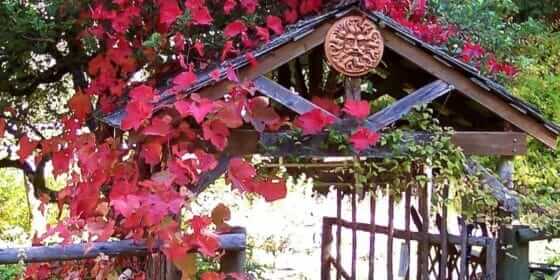The Voices of 23rd & Union
by Marnie Jones
When I asked Tom Bangasser to tell me the story of 23rd & Union, he redefined the context for our interview. “You can meet with me,” he said, “but you’ll also need to meet with the neighborhood.” At his invitation, we assembled at the Union Street Business Association (USBA) headquarters to talk about a collective dream that turns gentrification on its head. I sat down one February evening with Bangasser as well as architect and USBA advisor Donald King, neighborhood spokesperson Saviour Knowledge, and soul food maestro Helen Coleman. Over the next two hours, I really did meet the neighborhood as community members of several generations entered the room and joined the conversation. Coleman spoke of what the community had lost, while community advocates David Harris and Wyking Garrett joined in and spoke of what they see emerging. Jessdarnel Henton, Coleman’s daughter, came to the table to share both her grief at what’s been lost and her hope for the future.
USBA is one of many neighborhood and community associations operating in Seattle’s Central District. This is their story.
Respect, Transparency, and Trust
 Bangasser is one of five family members sharing ownership of MidTown Center, a 106,000 square foot block in Seattle’s Central District—9 parcels, in total, in his family’s ownership since as far back as 1941. He and four siblings—all white—have gradually bought, sold, and traded with 14 others in the Bangassers’ extended family who wanted out of the corner, and now they are holding fast to a dream which differs from the usual model of redevelopment through outside investment. A few black-owned businesses lease space at MidTown Center, but the general impression is one of vacancy, disrepair, and a corner in need of redevelopment. The family is not interested in the development game and wants to sell, but not just to anyone. Tom Bangasser, current USBA director and treasurer, will be moving out of those roles to avoid a conflict of interest as the reality of selling site control—10% ownership—to the Association comes closer. With black-owned small businesses returning, Bangasser and USBA hope to enable the historically-significant neighborhood to finally thrive again.
Bangasser is one of five family members sharing ownership of MidTown Center, a 106,000 square foot block in Seattle’s Central District—9 parcels, in total, in his family’s ownership since as far back as 1941. He and four siblings—all white—have gradually bought, sold, and traded with 14 others in the Bangassers’ extended family who wanted out of the corner, and now they are holding fast to a dream which differs from the usual model of redevelopment through outside investment. A few black-owned businesses lease space at MidTown Center, but the general impression is one of vacancy, disrepair, and a corner in need of redevelopment. The family is not interested in the development game and wants to sell, but not just to anyone. Tom Bangasser, current USBA director and treasurer, will be moving out of those roles to avoid a conflict of interest as the reality of selling site control—10% ownership—to the Association comes closer. With black-owned small businesses returning, Bangasser and USBA hope to enable the historically-significant neighborhood to finally thrive again.
“It’s an act of faith for my family group to stay with me in this, but we believe we can accomplish everyone’s financial objectives while doing something that’s the right thing to do, and which can potentially have huge impact,” Bangasser said. His ambition, which he shares with everyone who was present, relates to keeping black ownership in the community while bringing businesses back to the corner, replacing idleness and crime with community engagement, and growing the financial credibility of the intersection without the displacement of minority residents which gentrification usually brings. Selling to the community members, rather than a Wall Street investor, looks like the best way forward. While it won’t be easy, there’s a shared conviction that it’s not only possible, but important.
Bangasser pointed to a vital question that’s at the heart of the USBA’s work. “How do you make this neighborhood thrive?” Quoting our mutual friend Jerry Millhon, program director of the Whidbey Institute’s Thriving Communities Initiative, he said, “you have to start with trust, respect, and transparency. You have to treat people with dignity and a sense of belonging.”
Remembering What’s Been Lost
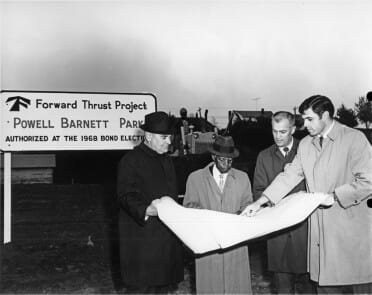 In order to describe what they’re trying to create together, members of the community started by reflecting on what’s been lost—and what’s in danger of slipping even further away.
In order to describe what they’re trying to create together, members of the community started by reflecting on what’s been lost—and what’s in danger of slipping even further away.
The Central District, a traditionally African-American area at the city’s heart, was once known for its theatre, its jazz music, and its pan-African multiculturalism. “Ray Charles played in the Black and Tan,” remembered Coleman, a great-grandmother and restauranteur with deep roots in the community. “I moved here in 1970, and things were alive. We used to go from one club to another, one restaurant to another—now, all you see is vacancy. We need to make it live again.” As Seattle becomes one of the whitest major cities in the United States, this group of neighbors is hanging on to a vision of progress without the erasure of black culture. MidTown Center might provide a place to cultivate their vision.
What’s been lost? The answers range from the practical to the emotional. In a neighborhood known now as much for its shuttered businesses and high crime rates as for its proud heritage as a hub of black culture in the Northwest, people have lost a sense of belonging, a sense of safety, and a sense of ownership. The solutions which have been proposed—and there have been many, through one municipally-commissioned study after another—generally involve outside opinions, outside financing, and outside financial beneficiaries. Bangasser described a hard financial reality facing anyone looking at property- or business-ownership in the Central District.
“In the 1950s, it became very evident that the area was being redlined. There was actually a red line drawn around the area on the map, indicating a community of ‘negroes’.” Bangasser told the story of the District since 1940’s post-war America, when an influx of African-American GIs who had served their country well settled to raise their families here after discharge from Fort Lewis. “Even very recently,” Bangasser said, “it’s been very difficult to get financing for a project in the Central area. Outsiders, primarily white, can get the financing, and they’re buying at significantly cheaper prices. You have to see the role that race plays in this. It’s subtle, and people don’t want to talk about it, so it festers. It’s been festering a long time. People of color are being lost.”
This neighborhood is one of the only places in Seattle where there are even fewer businesses now than ten years ago, and the common solution to that trend—selling to outside developers—won’t serve the people and communities whose heritage this place holds. “We make a distinction between community and neighborhood,” Bangasser said. “Neighborhood is placed based—it’s what we circle on the map—but there are a lot of communities passing through here. These are part of the fabric of this place.” Around the district, communities of Ethiopian, African American, Eritrean, and other heritage convene around shared culture, while Lutheran, Baptist, Catholic, and other church communities convene around shared faith. They struggle, universally, with the financial obstacles to business ownership in a district where it’s hard to get financing and harder to get insurance. Ten blocks away, property values are 400% higher—and ownership is almost universally white.
Donald King points to historic racism and redlining in answering the question of why black families don’t already own businesses and properties in the district. “People ask, ‘why didn’t the African American community just buy property back in the 40s and 50s, like Tom’s family did?’ Even if [historic black residents] had a little money, they wouldn’t have gotten a bank loan.” Today, though the outward signs of racism are more subtle, the legacy of racial discrimination is visible. The financial challenges of establishing creditworthiness and getting insurance in what is considered a high-risk area are almost overwhelmingly high. That leaves the District vulnerable to outside investors with huge cash assets—and to the gentrification and accompanying loss of diversity that’s swept through other parts of the city.
Umoja P.E.A.C.E. Center founding director Wyking Garrett, a passionate young community builder, spoke of what’s being lost not only to the black community but to the city and region as a whole. “Seattle is losing a critical piece of the fabric that makes it what it is—the African American black presence. The Central District has been the heart of the black community in the Northwest. There’s value for the whole city in regenerating this community, and in creating new opportunities with an African diaspora inclusiveness.” Garrett does not underestimate the magnitude of the work ahead, but he and others are already rising to the challenge of becoming an empowered community. “The future can be even greater than what the past has been. Black history—our story, in America—has been one of overcoming great obstacles, and of innovation. I think we have an opportunity to capture that and move it forward in even more dynamic ways.”
Linked Problems with Shared Solutions
 Along with vacancy and challenges in financing and insuring businesses, the District struggles with crime—linked problems, with shared solutions. “Safety is a basic, core instinct,” Bangasser said. “Right now, people are feeling unsafe. But maybe if you had a job, you wouldn’t have time to be hanging around. If it paid well enough, you might be able to be in one of these new apartments.” Gesturing across the street, Bangasser pointed to a 92-unit building under construction. Later, he told me I could count the number of minority workers on that particular construction project without taking my shoes off, calling it an example of “cleaning up” without community input. “Ahead of time, there’s all the rhetoric about engaging the community. When it gets down to implementation, almost zero.”
Along with vacancy and challenges in financing and insuring businesses, the District struggles with crime—linked problems, with shared solutions. “Safety is a basic, core instinct,” Bangasser said. “Right now, people are feeling unsafe. But maybe if you had a job, you wouldn’t have time to be hanging around. If it paid well enough, you might be able to be in one of these new apartments.” Gesturing across the street, Bangasser pointed to a 92-unit building under construction. Later, he told me I could count the number of minority workers on that particular construction project without taking my shoes off, calling it an example of “cleaning up” without community input. “Ahead of time, there’s all the rhetoric about engaging the community. When it gets down to implementation, almost zero.”
Pointing to the problem of crime, Bangasser explained that a very successful “Hotspot” program of the Seattle Police Department dramatically reduced crime in the area before being abandoned. “They stopped the program because they thought they were done.” This is, apparently, a common problem: programs that help the community in the short term, but which are facilitated by outside entities, often fail when they’re ended after a year or two. What USBA is dreaming of is ongoing engagement, based on the premise of inherent human dignity—engagement lasting not years, but generations.
A New Vision
 “The one thing everybody has in common,” Bangasser explained, “is that there are 24 hours in the day. People could put all of their time and energy into this project, and really make it great. From there, you start to see difference—differences in talents, differences in treasury. Some people can bring money to the table, and others have unique skills.” What the USBA has done thus far is build strategic partnerships with other organizations who share the common intention to make this neighborhood thrive, and define goals which will make thriving possible.
“The one thing everybody has in common,” Bangasser explained, “is that there are 24 hours in the day. People could put all of their time and energy into this project, and really make it great. From there, you start to see difference—differences in talents, differences in treasury. Some people can bring money to the table, and others have unique skills.” What the USBA has done thus far is build strategic partnerships with other organizations who share the common intention to make this neighborhood thrive, and define goals which will make thriving possible.
“First,” Bangasser said, “we have to address the ownership issue. Otherwise, people really aren’t equal. If someone’s in charge and everyone else works for him, that’s unacceptable. Second, we need jobs—and third, we need to create opportunities.”
To help make ownership possible, the USBA needs to establish site control. “It takes a lot of money to buy the site, but less to get control of it,” Bangasser said. “We call it the 10% solution. That’s about 3 million dollars.” For a dose of perspective, Bangasser mentioned that Seattle is building a $210 million youth detention facility in the same district—a move which has been criticized as deepening the city’s racial divide and offering the wrong answer to the challenges of youth crime. To raise these initial funds, USBA is considering crowd-sourcing investments through a model like Kickstarter or Fundrise.
While some of this $3 million might come from those that think the neighborhood deserves a break, it won’t be an outright handout. “We’re working on a financial packaging to see what’s going to give us the greatest resource of capital and the greatest control over the destiny of how it’s used,” King said. “Those are two things which are usually in opposition to one another.” Addressing the question of entitlement versus empowerment, King asks, “how can we use some of that entitlement philosophy to empower people with capital? Someone might say, ‘I think the Central District deserves a break and I’ll take less interest on my funds’, but it’s got to be a business deal. It’s not charity.”
Beyond site control, USBA members envision not just the purchase and development of the property but also ongoing empowerment of entrepreneurs to start, grow, and sustain their businesses. What the financial realities of this support might be remain unclear, but USBA knows they want to remain engaged for the long haul. “We’d like to see businesses like Ms. Helen’s come back, and we’d like to strengthen businesses that are here,” King said. “Influencing the development of the property won’t be enough.”
In addition to creating a livable economy and a safe neighborhood in the Central District, USBA hopes to restore the community’s sense of pride in heritage. Not far from where we met, the James W. Washington fountain is broken and dry, a symbol of our fading memory of the role of African Americans in Seattle’s development. “This is a legacy corner, and it warrants us ensuring that the legacy is heard,” Bangasser said.
A Pioneering Effort
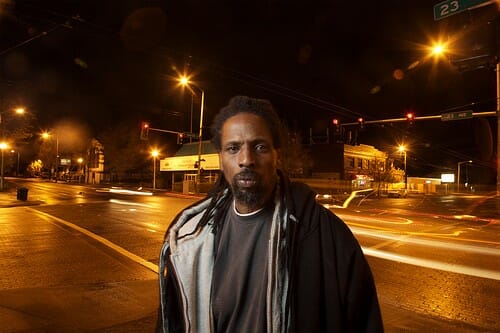 While Coleman sees the price the Central District has paid—businesses lost, crime on the rise, and “blood, sweat, and tears” expended by many—she looks to the next generations to stand with her in fighting for what the District can become again. “I’d like to be here, for my family’s sake, and build it back up again. We need this. We don’t need to give up, and we deserve to have this.” The next generation, at least in this room, is ready and willing. Jessdarnel Henton, Coleman’s daughter, grew up running a restaurant with her mom and loves the District as the place where she came into her adulthood. David Harris, cultural entrepreneur and engineer with Technology Access Foundation, works with black youth in the areas of science, technology, engineering, and math, while Garrett nurtures youth in the areas of positive education, art, culture, and enterprise through the Umoja P.E.A.C.E. Center not far from 23rd & Union. The vision they share with King, Knowledge, and others is a compelling one, not just for Seattle but for communities everywhere struggling with gentrification.
While Coleman sees the price the Central District has paid—businesses lost, crime on the rise, and “blood, sweat, and tears” expended by many—she looks to the next generations to stand with her in fighting for what the District can become again. “I’d like to be here, for my family’s sake, and build it back up again. We need this. We don’t need to give up, and we deserve to have this.” The next generation, at least in this room, is ready and willing. Jessdarnel Henton, Coleman’s daughter, grew up running a restaurant with her mom and loves the District as the place where she came into her adulthood. David Harris, cultural entrepreneur and engineer with Technology Access Foundation, works with black youth in the areas of science, technology, engineering, and math, while Garrett nurtures youth in the areas of positive education, art, culture, and enterprise through the Umoja P.E.A.C.E. Center not far from 23rd & Union. The vision they share with King, Knowledge, and others is a compelling one, not just for Seattle but for communities everywhere struggling with gentrification.
“There’s an opportunity here to create momentum for the next generation of entrepreneurs, and and sustain those current entrepreneurs who hold this as the center of economic development for the African American community in Seattle and beyond,” Harris said. “We are, in many ways, at the forefront [of this effort]. We are pioneers.”
Saviour Knowledge, the self-professed Guardian of the Corner, spends his days cultivating community at 23rd & Union. He’s become a steward of the neighborhood’s stories, and he sees the promise of a thriving future. “The Central District needs some help,” he said, “but we have a common intention and each day we inch toward the goal of creating a good reality here.”
saviour knowledge portrait by inye wokoma; historic photo courtesy wikimedia commons/seattle municipal archives; other photos courtesy donald king and usba.
March 10, 2015
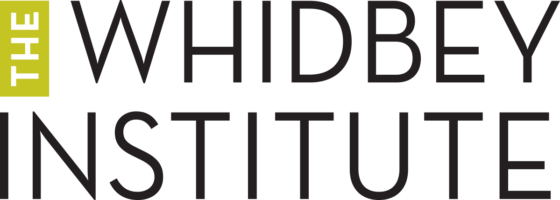
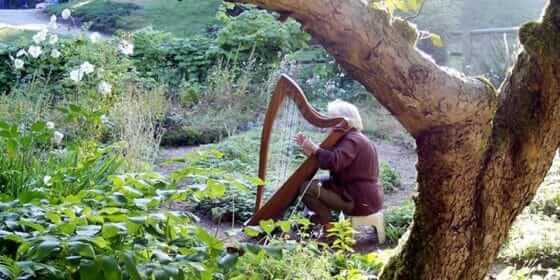
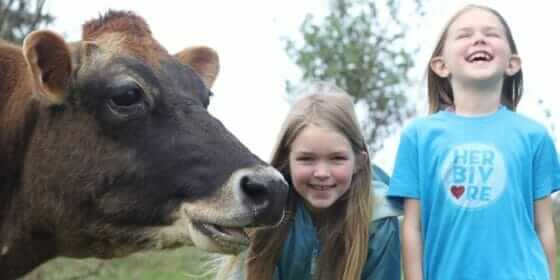
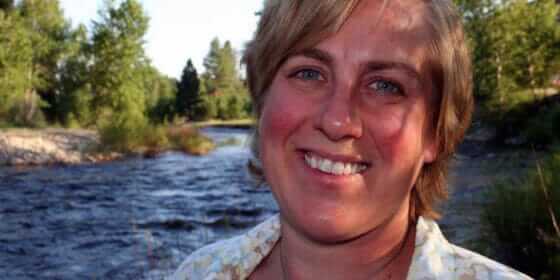
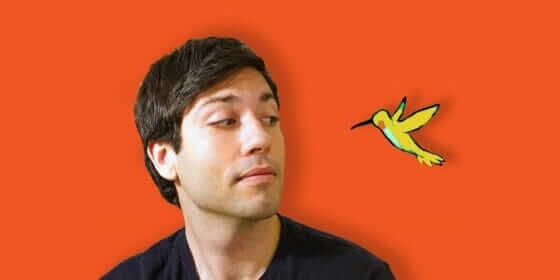
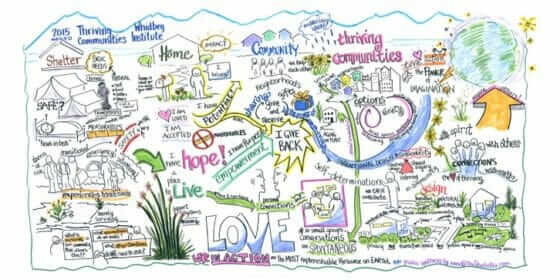
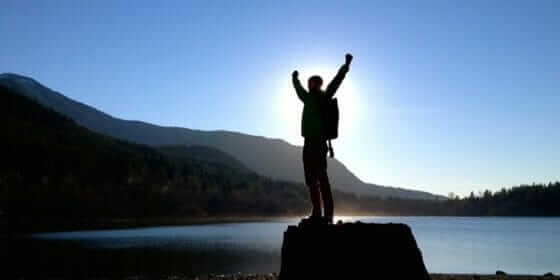
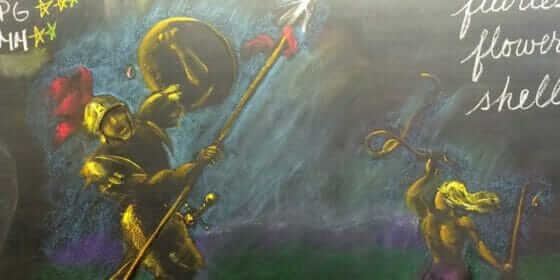
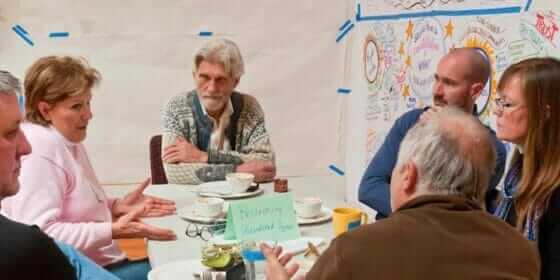
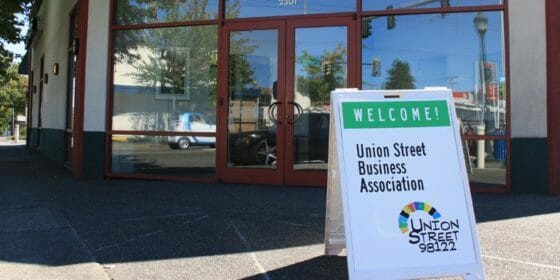
 Bangasser is one of five family members sharing ownership of MidTown Center, a 106,000 square foot block in Seattle’s Central District—9 parcels, in total, in his family’s ownership since as far back as 1941. He and four siblings—all white—have gradually bought, sold, and traded with 14 others in the Bangassers’ extended family who wanted out of the corner, and now they are holding fast to a dream which differs from the usual model of redevelopment through outside investment. A few black-owned businesses lease space at MidTown Center, but the general impression is one of vacancy, disrepair, and a corner in need of redevelopment. The family is not interested in the development game and wants to sell, but not just to anyone. Tom Bangasser, current USBA director and treasurer, will be moving out of those roles to avoid a conflict of interest as the reality of selling site control—10% ownership—to the Association comes closer. With black-owned small businesses returning, Bangasser and USBA hope to enable the historically-significant neighborhood to finally thrive again.
Bangasser is one of five family members sharing ownership of MidTown Center, a 106,000 square foot block in Seattle’s Central District—9 parcels, in total, in his family’s ownership since as far back as 1941. He and four siblings—all white—have gradually bought, sold, and traded with 14 others in the Bangassers’ extended family who wanted out of the corner, and now they are holding fast to a dream which differs from the usual model of redevelopment through outside investment. A few black-owned businesses lease space at MidTown Center, but the general impression is one of vacancy, disrepair, and a corner in need of redevelopment. The family is not interested in the development game and wants to sell, but not just to anyone. Tom Bangasser, current USBA director and treasurer, will be moving out of those roles to avoid a conflict of interest as the reality of selling site control—10% ownership—to the Association comes closer. With black-owned small businesses returning, Bangasser and USBA hope to enable the historically-significant neighborhood to finally thrive again. In order to describe what they’re trying to create together, members of the community started by reflecting on what’s been lost—and what’s in danger of slipping even further away.
In order to describe what they’re trying to create together, members of the community started by reflecting on what’s been lost—and what’s in danger of slipping even further away. Along with vacancy and challenges in financing and insuring businesses, the District struggles with crime—linked problems, with shared solutions. “Safety is a basic, core instinct,” Bangasser said. “Right now, people are feeling unsafe. But maybe if you had a job, you wouldn’t have time to be hanging around. If it paid well enough, you might be able to be in one of these new apartments.” Gesturing across the street, Bangasser pointed to a 92-unit building under construction. Later, he told me I could count the number of minority workers on that particular construction project without taking my shoes off, calling it an example of “cleaning up” without community input. “Ahead of time, there’s all the rhetoric about engaging the community. When it gets down to implementation, almost zero.”
Along with vacancy and challenges in financing and insuring businesses, the District struggles with crime—linked problems, with shared solutions. “Safety is a basic, core instinct,” Bangasser said. “Right now, people are feeling unsafe. But maybe if you had a job, you wouldn’t have time to be hanging around. If it paid well enough, you might be able to be in one of these new apartments.” Gesturing across the street, Bangasser pointed to a 92-unit building under construction. Later, he told me I could count the number of minority workers on that particular construction project without taking my shoes off, calling it an example of “cleaning up” without community input. “Ahead of time, there’s all the rhetoric about engaging the community. When it gets down to implementation, almost zero.” “The one thing everybody has in common,” Bangasser explained, “is that there are 24 hours in the day. People could put all of their time and energy into this project, and really make it great. From there, you start to see difference—differences in talents, differences in treasury. Some people can bring money to the table, and others have unique skills.” What the USBA has done thus far is build strategic partnerships with other organizations who share the common intention to make this neighborhood thrive, and define goals which will make thriving possible.
“The one thing everybody has in common,” Bangasser explained, “is that there are 24 hours in the day. People could put all of their time and energy into this project, and really make it great. From there, you start to see difference—differences in talents, differences in treasury. Some people can bring money to the table, and others have unique skills.” What the USBA has done thus far is build strategic partnerships with other organizations who share the common intention to make this neighborhood thrive, and define goals which will make thriving possible. While Coleman sees the price the Central District has paid—businesses lost, crime on the rise, and “blood, sweat, and tears” expended by many—she looks to the next generations to stand with her in fighting for what the District can become again. “I’d like to be here, for my family’s sake, and build it back up again. We need this. We don’t need to give up, and we deserve to have this.” The next generation, at least in this room, is ready and willing. Jessdarnel Henton, Coleman’s daughter, grew up running a restaurant with her mom and loves the District as the place where she came into her adulthood. David Harris, cultural entrepreneur and engineer with Technology Access Foundation, works with black youth in the areas of science, technology, engineering, and math, while Garrett nurtures youth in the areas of positive education, art, culture, and enterprise through the Umoja P.E.A.C.E. Center not far from 23rd & Union. The vision they share with King, Knowledge, and others is a compelling one, not just for Seattle but for communities everywhere struggling with gentrification.
While Coleman sees the price the Central District has paid—businesses lost, crime on the rise, and “blood, sweat, and tears” expended by many—she looks to the next generations to stand with her in fighting for what the District can become again. “I’d like to be here, for my family’s sake, and build it back up again. We need this. We don’t need to give up, and we deserve to have this.” The next generation, at least in this room, is ready and willing. Jessdarnel Henton, Coleman’s daughter, grew up running a restaurant with her mom and loves the District as the place where she came into her adulthood. David Harris, cultural entrepreneur and engineer with Technology Access Foundation, works with black youth in the areas of science, technology, engineering, and math, while Garrett nurtures youth in the areas of positive education, art, culture, and enterprise through the Umoja P.E.A.C.E. Center not far from 23rd & Union. The vision they share with King, Knowledge, and others is a compelling one, not just for Seattle but for communities everywhere struggling with gentrification.